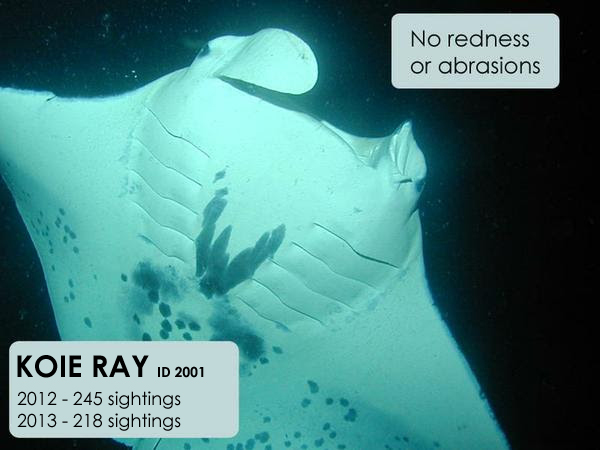One of the most frequently asked questions we get is “Can we touch the mantas?” and the short answer is NO.
Let’s dive a bit deeper into why touching a manta ray is a bad idea for many reasons…
Touching Manta Rays Can Startle Them
The first reason not to touch a manta ray is pretty straightforward: these are wild animals, and they’re not used to being touched by humans.
Although mantas are incredibly relaxed and have a magical effect on people who swim with them (we don’t call them “gentle giants of the sea” for nothing!), when they’re startled they could inadvertently swim into corals (damaging them) or other divers and snorkelers (potentially hurting them).
When You Touch a Manta Ray, you Damage its Coating
Have you ever touched a fish? And we don’t mean the ones that are already prepared in Sushi or “fish and chips”- LOL.
Fish feel slimy because of a mucus coating, making it hard to hold and easily slip through the fingers.
Manta rays are fish, so they have the same slime coating on their bodies. The coating protects them from bacteria, and if it gets removed, it can expose the manta to infections.
Touching a manta ray means touching the coating – and in most cases, that results in damage to the coating… and exposing them to all the things that coating usually protects them from.
As a general rule, our belief is that humans should not touch anything that lives in the ocean – dolphins, turtles, coral, etc.
The usual follow-up question is:
Why do Mantas have Red Sores on their Underbelly?
Some manta rays have red sores (or abrasions) on their underbelly, specifically on their cephalic fins.
There may be two potential reasons for these abrasions:
- Natural causes: they may have rubbed against rock or coral or got hurt during a mating ritual.
- Human impact: Humans attempted to touch them.

Grayer Ray: a manta ray with an abrasion to his cephalic fin
A comparison: Curly Ray and Koie Ray
Check out the following comparison of Curly Ray and Koie Ray. The picture shows Curly Ray (on the left) with multiple abrasions (redness) and Koie Ray (on the right) looking clean and healthy.
Both mantas were identified over 18 years ago. Curly Ray has had redness and sores on his cephalic fins and underside for as long as we remember. Koie Ray has always been “clean”.
Statistics from 2012 and 2013 show that we saw Curly 60-100 times at the night feeding grounds, whereas Koie Ray, one of the top “performers,” was seen 218 and 245 times.
While Curly comes less often, he has more abrasions than Koie Ray. Why is that? We think that once the slime coating is gone, Curly has not been able to recover from his injuries, so the affected areas stay red.
Do Mantas Feel Pain – and How do they Heal when they get Injured? [Video]

Black Spiny Sea Urchin
Other Ways in which Manta Rays Get Hurt
We have also seen Manta Rays with black spiny sea urchins sticking out of their body (mouth or cephalic fins), which would indicate that they get too close to the reef and seem to run into “stuff” and contributes naturally to lose the protective coating.
Who would have thought mantas are clumsy? 😉
The good news is that they survive despite the redness and abrasions, but it does not mean humans should touch the mantas.
When we take guests snorkeling with manta rays, many of the Kona mantas come very close to participants.
Our philosophy is to enter their environment as guests showing respect and appreciation, and DO NO HARM!



















0 Comments